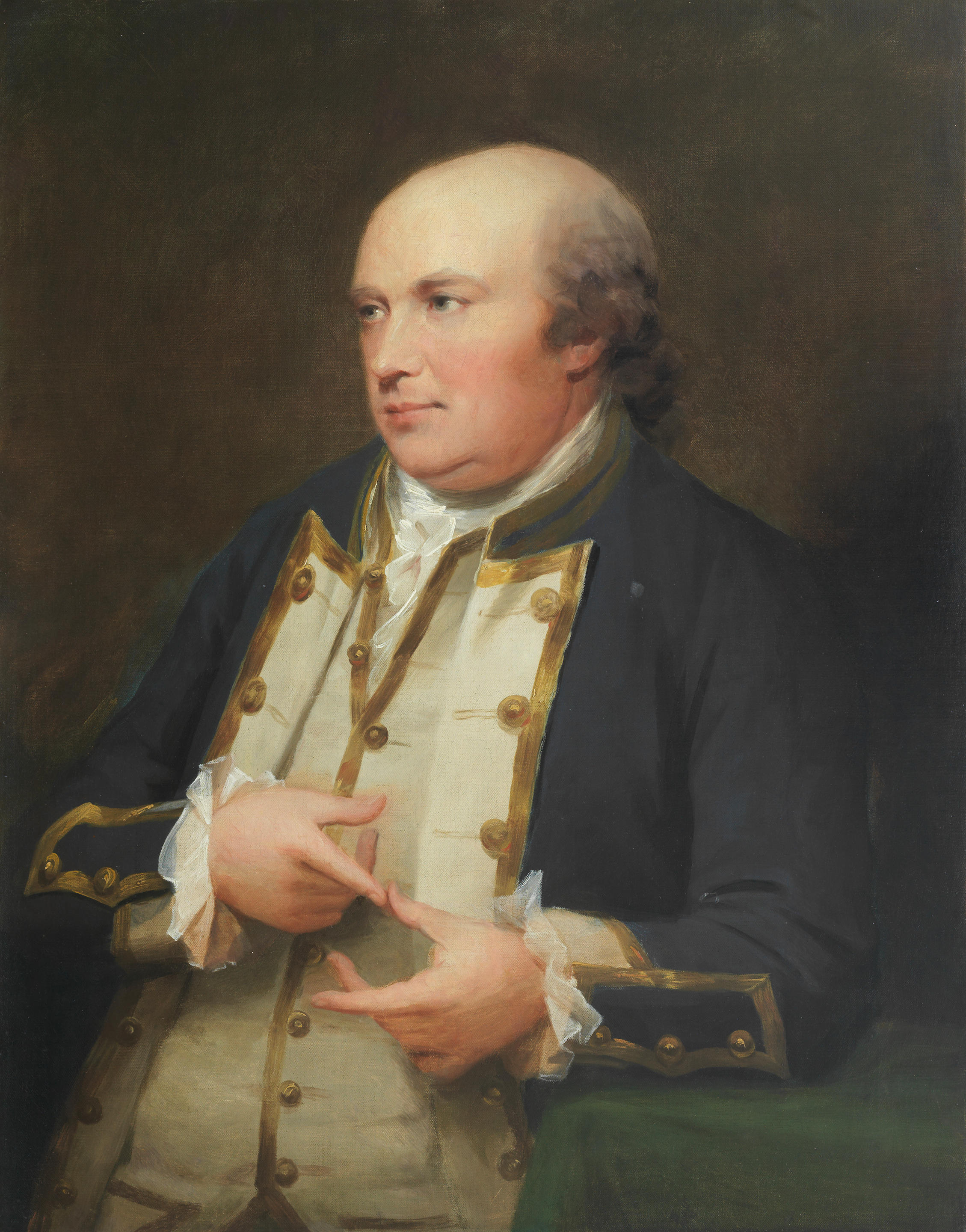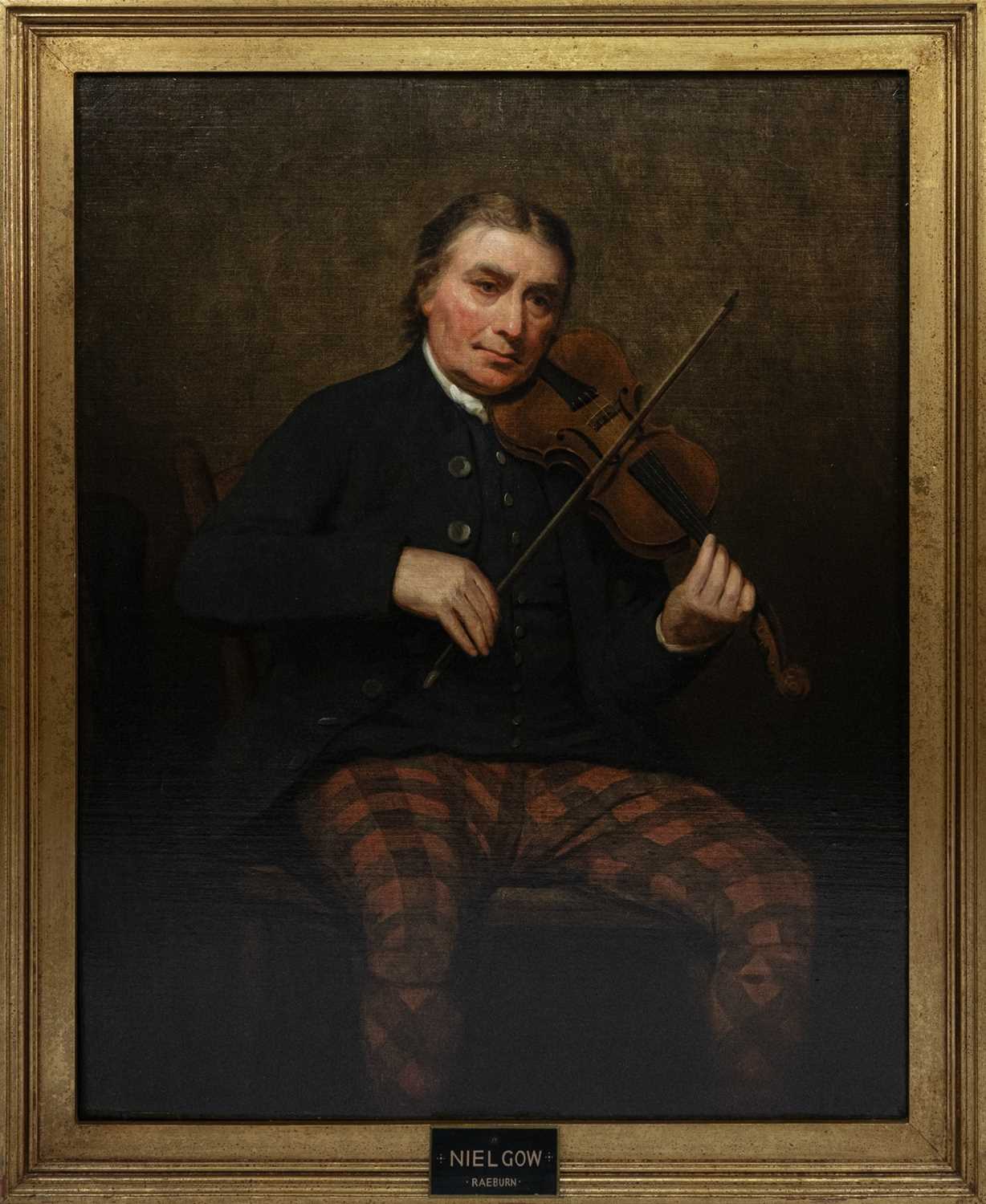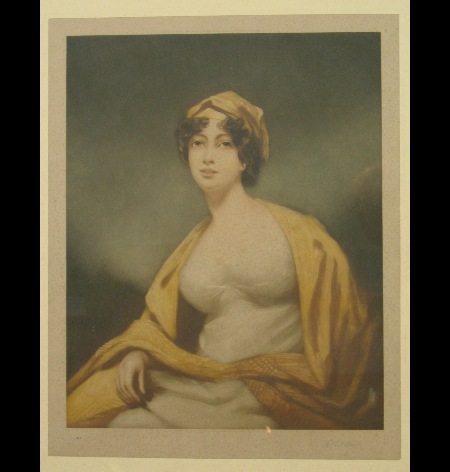Oil on canvas 127cm x 102cm (50in x 40in) Provenance: Sir Andrew Agnew , Bart Sir John Reid Glasgow and thence by family descent Exhibited: On loan to the National Gallery of Scotland, 1921-28 Stedelijk Museum, Amsterdam, British Art 1936, no.140 Royal Academy, London, Scottish Art, 1939 Aberdeen Art Gallery, Festival Exhibition, Paintings from North East Homes Literature: James L Caw, Catalogue of the Collection of Pictures belonging to John Reid James Maclehose and Sons Ill p.6 Note: Lady Agnes Carnegie (1763-1860) was born in Edinburgh in 1763. Her father, Andrew Elliot, was the last Governor of New York under British rule, and when Agnes was twelve months old the Elliot family relocated to New York. When American independence was acknowledged in 1783 the Elliot family returned to Scotland, and later that same year Agnes married Sir David Carnegie, MP for Kincardineshire and deputy governor of the British Linen Company. The couple and their twelve children lived between Kinnaird Castle and their house in Gloucester Place, London. Agnes was herself a talented pastel artist. This enigmatic portrait of Lady Agnes Carnegie was made c.1810, when Raeburn was at the height of his powers. The subtle, muted palette is a signature of Raeburn’s, as is the soft, glowing illumination of the subject. Raeburn’s ability to evoke texture and light is as remarkable as his talent for capturing his sitter’s personality, evidencing his interest in Enlightenment principles of observation: he insisted that his sitter remained before him throughout the painting process. In this portrait Lady Carnegie looks towards the viewer with soft, smiling poise, and while her presence feels gentle her fine clothing and jewellery declare her status as a wealthy and influential individual. Raeburn’s mastery for descriptive brushwork is evident throughout this portrait, demonstrated by the delicate, ephemeral ruff at her throat, contrasted with the startling dimension and precision of her lace cuffs. Also of note is the light playing on the silken stripes of Lady Carnegie’s ivory headdress. Today Henry Raeburn (1756-1823) is celebrated as one of the greatest Scottish portrait painters. Son of an Edinburgh yarn-boiler, Raeburn was apprenticed in his teens to jeweller and goldsmith James Gilliland. Despite having received little training, his formidable talent as a portrait painter was soon recognised, and he quickly moved from painting miniatures to creating large oils on canvas. Under the sponsorship of Sir Joshua Reynolds Raeburn relocated to Italy in 1785 to study the Old Masters and hone his craft. Two years later he returned to Edinburgh, taking a property on George Street. The work he produced forthwith cemented his legacy as Scotland’s finest portrait artist. This portrait comes from the collection of John Reid (1861-1933), a son of James Reid of Auchterarder, who founded the Hyde Park Locomotive Works in Glasgow. The Reid family were early collectors of Barbizon and Hague school paintings, and also owned several important Old Masters. French and Dutch paintings were well-represented in John Reid’s personal collection, and he also developed a fine selection of British paintings, including this remarkable Raeburn portrait.
Oil on canvas 127cm x 102cm (50in x 40in) Provenance: Sir Andrew Agnew , Bart Sir John Reid Glasgow and thence by family descent Exhibited: On loan to the National Gallery of Scotland, 1921-28 Stedelijk Museum, Amsterdam, British Art 1936, no.140 Royal Academy, London, Scottish Art, 1939 Aberdeen Art Gallery, Festival Exhibition, Paintings from North East Homes Literature: James L Caw, Catalogue of the Collection of Pictures belonging to John Reid James Maclehose and Sons Ill p.6 Note: Lady Agnes Carnegie (1763-1860) was born in Edinburgh in 1763. Her father, Andrew Elliot, was the last Governor of New York under British rule, and when Agnes was twelve months old the Elliot family relocated to New York. When American independence was acknowledged in 1783 the Elliot family returned to Scotland, and later that same year Agnes married Sir David Carnegie, MP for Kincardineshire and deputy governor of the British Linen Company. The couple and their twelve children lived between Kinnaird Castle and their house in Gloucester Place, London. Agnes was herself a talented pastel artist. This enigmatic portrait of Lady Agnes Carnegie was made c.1810, when Raeburn was at the height of his powers. The subtle, muted palette is a signature of Raeburn’s, as is the soft, glowing illumination of the subject. Raeburn’s ability to evoke texture and light is as remarkable as his talent for capturing his sitter’s personality, evidencing his interest in Enlightenment principles of observation: he insisted that his sitter remained before him throughout the painting process. In this portrait Lady Carnegie looks towards the viewer with soft, smiling poise, and while her presence feels gentle her fine clothing and jewellery declare her status as a wealthy and influential individual. Raeburn’s mastery for descriptive brushwork is evident throughout this portrait, demonstrated by the delicate, ephemeral ruff at her throat, contrasted with the startling dimension and precision of her lace cuffs. Also of note is the light playing on the silken stripes of Lady Carnegie’s ivory headdress. Today Henry Raeburn (1756-1823) is celebrated as one of the greatest Scottish portrait painters. Son of an Edinburgh yarn-boiler, Raeburn was apprenticed in his teens to jeweller and goldsmith James Gilliland. Despite having received little training, his formidable talent as a portrait painter was soon recognised, and he quickly moved from painting miniatures to creating large oils on canvas. Under the sponsorship of Sir Joshua Reynolds Raeburn relocated to Italy in 1785 to study the Old Masters and hone his craft. Two years later he returned to Edinburgh, taking a property on George Street. The work he produced forthwith cemented his legacy as Scotland’s finest portrait artist. This portrait comes from the collection of John Reid (1861-1933), a son of James Reid of Auchterarder, who founded the Hyde Park Locomotive Works in Glasgow. The Reid family were early collectors of Barbizon and Hague school paintings, and also owned several important Old Masters. French and Dutch paintings were well-represented in John Reid’s personal collection, and he also developed a fine selection of British paintings, including this remarkable Raeburn portrait.









.jpg)





Testen Sie LotSearch und seine Premium-Features 7 Tage - ohne Kosten!
Lassen Sie sich automatisch über neue Objekte in kommenden Auktionen benachrichtigen.
Suchauftrag anlegen